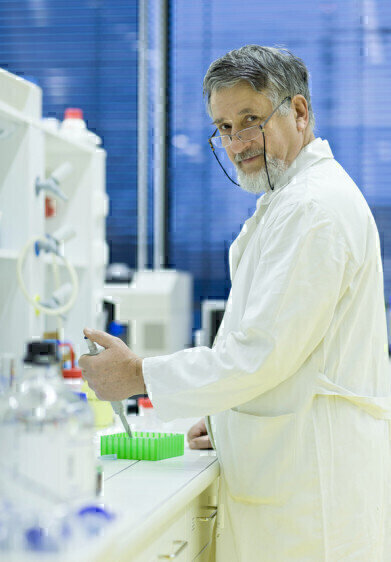Analytical Instrumentation
Pros and Cons of Atomic Absorption Spectroscopy
Jun 03 2014
When a substance is vaporised, the frequency of light it will absorb differs and is unique to each element. Therefore, by analysing the spectrum of light produced when a substance is vaporised, it is possible to determine the elemental composition of the substance, and how heavily concentrated it is with each element as well. This practice is known as atomic absorption spectroscopy (AAS).
AAS was first deployed back in 1859 by Gustav Kirschoff and Robert Bunsen to detect the presence of certain atoms in flames and gases. Since then, the modern approach to AAS has been revolutionised, most noticeably by A. C. Walsh and C. T. J. Alkemade in the 1950s. These days, the technique has become an important tool in scientific research, especially when detecting the presence of metal ions in a substance.
What are the Pros of AAS?
Accuracy. AAS is a great method of producing accurate results, normally with a rate of 0.5-5%, or an even better rate if appropriate standards are used.
Sensitivity. An incredibly sensitive method of detection, AAS can actually measure all the way down to parts per billion of a gram in a substance. As such, it has revolutionised the way certain practices are carried out, in all sorts of fields. For example, in medicine, it can be used to detect trace toxin levels of atmosphere or medication. Similarly, in pharmaceuticals, the undesirable trace elements of a catalyst that had sometimes been present in the final product can now be detected. And in agriculture, AAS has been used to identify trace elements that we were previously unaware of, such as cobalt or molybdenum, and to identify their importance, presence or absence in soil.
Cost. Since AAS often uses less argon than other methods, running costs are often lower.
Accessibility. Due to the process relying upon radiation and light absorption, it can reach previously inaccessible places. For example, miners can now use AAS to determine if a rock contains enough elements of gold or other precious metals to be worthwhile mining.
What are the Cons of AAS?
Lack of Versatility. Most AAS practices are more geared towards testing liquids rather than solids. This is because the substance has to be vaporised before it can be analysed. Liquids lend themselves to this much more than solids, some of which take a very long take to be dissolved and some of which do not support dissolution at all. Furthermore, the techniques which do allow for solid-substance testing can not be used on non-metals. For a closer look at the relationship between solids and liquids in AAS, please see this article: Overview of Most Commonly Used Analytical Techniques for Elemental Analysis.
Equipment. Though the equipment is often more portable than previous instrumentation, it also often comes with a heftier price tag, making it unfeasible for widespread lab use.
Precision. Other chemicals that are found in the sample or in the surrounding atmosphere can have an interfering and distorting effect on the results of the study.
Digital Edition
PIN 25.3 June/July
June 2024
Analytical Instrumentation - Recent Advances In Various Bench Scale Accelerated Oxidative Testing Methods For Fuels - Petrochemical Industry: Anton Paar Solutions Streamline Processes, Reduce H...
View all digital editions
Events
Jul 30 2024 Jakarta, Indonesia
Jul 30 2024 Jakarta, Indonesia
China Energy Summit & Exhibition
Jul 31 2024 Beijing, China
Jul 31 2024 Chengdu, China
Aug 05 2024 Moon Township, PA, USA


















